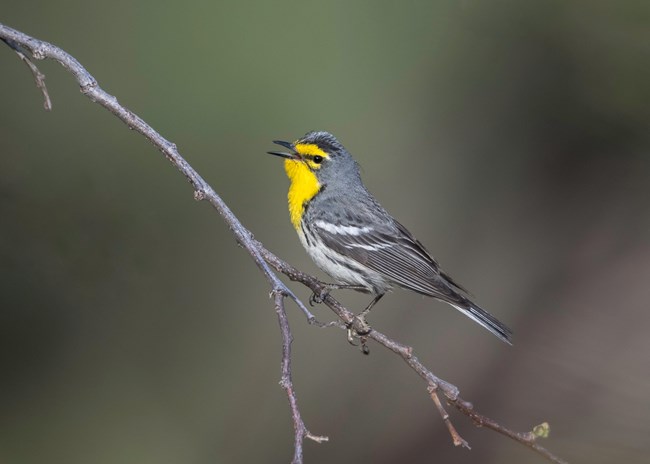
Yellow-rumped Warbler (Setophaga coronata)The Yellow-rumped warbler is a large, full-bodied warbler with a large head, sturdy bill, and long, narrow tail. Females are duller and may show some brown. Despite being large for a warbler, they are still a small bird measuring just 4.7-5.5 inches in length. Yellow-rumped warblers mainly eat insects in the summer, including caterpillars and other larvae, leaf beetles, ants, aphids, grasshoppers, and gnats, as well as spiders. On migration and in winter they eat great numbers of fruits which their digestive systems are uniquely suited among warblers to digest. 
Grace's Warbler (Setophaga graciae)Grace's Warbler's favor ponderosa and pinyon pine forests where they eat insects like beetles and flies, which they catch while foraging in the upper third of mature pine trees, well away from the trunk, along smaller branches, twigs, and in pine-needle clusters. They occasionally catch flying insects on the wing or feed on the ground. These small, energetic songbirds (4.7 inch length) have a small, fine bill and a medium-length tail. Adult males are ashy gray above with a yellow face and throat. They are mostly white below with black stripes on the flanks and two white wingbars. Adult females are similar but less boldly patterned. 
Black-Throated Gray Warbler (Setophaga nigrescens)The Black-throated Gray Warbler is around 5 in (13 cm) tall and has distinctive white and black stripes on its face under its eyes. The rest of this bird’s plumage is a darker grey with a lighter grey or white underbelly. These birds prefer to live on the edges of forests, dry hillsides, canyons, or in thick underbrush throughout the southwest of the United States. Its diet consists of mostly insects, especially worms and caterpillars, that are found while foraging in low-growing foliage. Fun facts: These birds migrate to Mexico for the winter and return to the Southwest of the United States in early spring. |
Last updated: September 11, 2024
